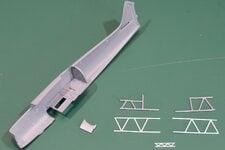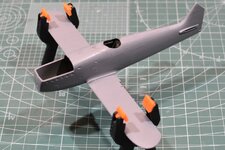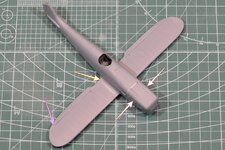Grant Barr
Senior Airman
My next kit is the Heinkel He-51 from Classic Airframes. This is quite an old issue kit, one that I managed to pick up from ePay for a manageable price. Like all low pressure injection molded kits it will have a myriad of fit issues but if I get it right I think it will build into pretty sound representation of the real aircraft.

As you can see from the box this kit has done a few miles, probably in multiple stashes. None-the-less the contents are pretty good and look to be complete. I've added an IP from Yahu (even though it is made for Roden or Eduard kits) that I hope to be able to fit into this one.


I don't have any alternate decals sourced so will be going with the kit option #3 of JG 135 at Bad Albling in early 1938. Preliminary research has not turned up too much in the way of photographic proof on this one but I will be happy to just follow what the instructions say if I still don't find out too much more about this option. The decals still look sound, but should I have any issues I'm sure I can either source from elsewhere or reproduce them (most likely option if this happens).


This kit is likely to take a while to complete as I don't get a lot of time at the workbench across the warmer months of the year (for us antipodeans). Looking forward to the challenges presented by rigging and top wing alignments; fingers crossed that it won't end up in the bin if it all gets too hard...

As you can see from the box this kit has done a few miles, probably in multiple stashes. None-the-less the contents are pretty good and look to be complete. I've added an IP from Yahu (even though it is made for Roden or Eduard kits) that I hope to be able to fit into this one.


I don't have any alternate decals sourced so will be going with the kit option #3 of JG 135 at Bad Albling in early 1938. Preliminary research has not turned up too much in the way of photographic proof on this one but I will be happy to just follow what the instructions say if I still don't find out too much more about this option. The decals still look sound, but should I have any issues I'm sure I can either source from elsewhere or reproduce them (most likely option if this happens).


This kit is likely to take a while to complete as I don't get a lot of time at the workbench across the warmer months of the year (for us antipodeans). Looking forward to the challenges presented by rigging and top wing alignments; fingers crossed that it won't end up in the bin if it all gets too hard...









 )
)









